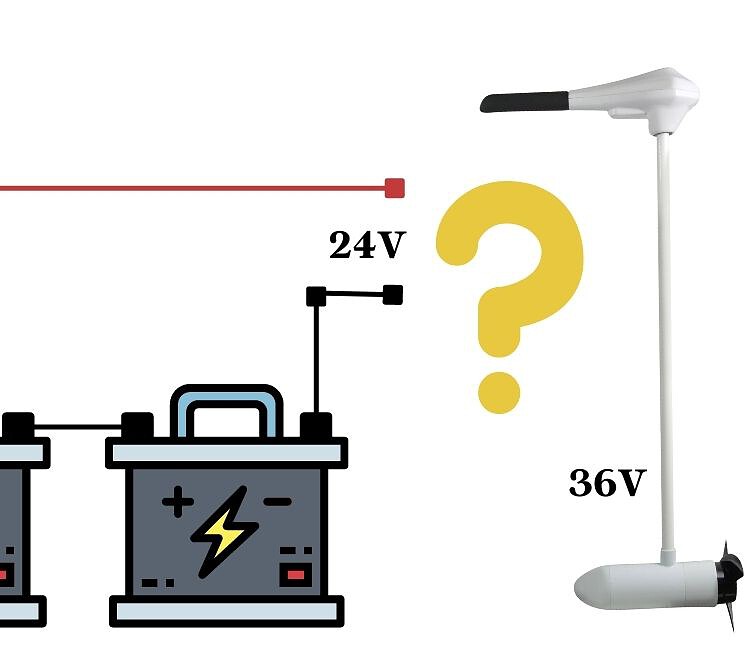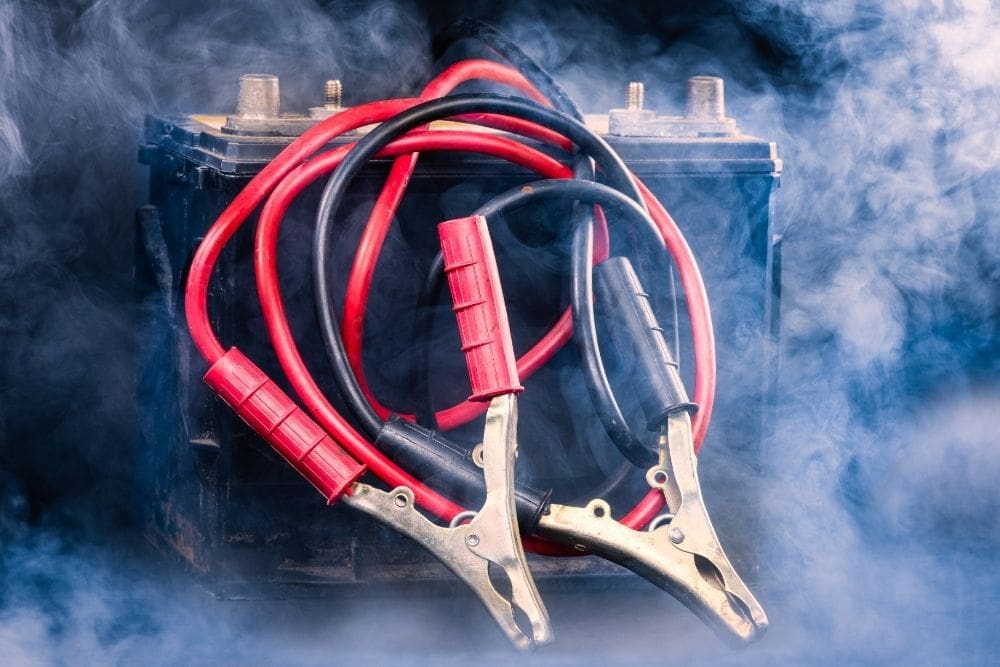Are you thinking about trying to run a 36-volt trolling motor on 24 volts? Would you like to get out on the water even though you don’t have an optimal setup?
Here’s what you should know about trying to run a 36-volt trolling motor on a 24-volt battery setup. That way, you can decide for yourself if you want to try it or if you want to make your trolling motor voltage and your battery voltage match.
Table of Contents
What is Voltage?

Voltage measures the pressure that moves electrical current through a line. The harder the current is pushed through the line, the higher the voltage.
You can also look at voltage as a difference in potential energy between two points on a circuit. If one side of the circuit has more energy than the other one does, you have potential energy. The greater that difference between the sides, the more potential energy there is.
A 36-volt battery setup uses 1.5 times the amount of pressure as a 24-volt battery system. Most of the time, boat batteries come in 12 volts. You have to connect two of these batteries to get to 24 volts and three to get up to 36 volts.
Said another way, a 36-volt battery has 1.5 times the difference in potential energy than a 24-volt battery.
What is the Difference Between a 24-volt and a 36-volt Trolling Motor?
24-volt trolling motors tend to be smaller and produce less thrust than a 36-volt trolling motor. They also will not run for as long a time, so your time out fishing might need to be shorter.
However, 24-volt trolling motors also cost less and weigh less than their 36-volt counterparts. If your boat is the right size for a 24-volt trolling motor, there’s no reason to pay more and have to haul around that extra weight.
Both 24- and 36-volt trolling motors are designed to move boats through the water at 3-5 miles per hour. The biggest difference is the amount of thrust that they offer.
Thrust does not necessarily equal speed, though. Instead, thrust is what will get your boat going from a standstill. Thus, larger and heavier boats need more thrust than smaller, lighter ones do.
Will a 36-volt Trolling Motor Turn On With 24 Volts of Power?

The answer to this is a resounding…maybe.
Most 36-volt trolling motors, especially older ones, will turn on when only powered by 24 volts. Whether the motor will produce enough thrust to move your boat, though, depends on several factors.
These factors include:
- The size and weight of your boat, including all people and gear it is carrying
- The way your trolling motor handles having less voltage, which varies by make and model and may even be different for each motor
- What you’re expecting from the trolling motor
You may get a trolling motor that turns on but does not produce enough thrust to move even the smallest, lightest boat. You may end up with a trolling motor that only moves your boat 2-3 miles per hour, which may not be fast enough for you.
On the other hand, you may end up with a less efficient, slower trolling motor but one that will still work for your needs.
Note that some newer trolling motors are designed not to turn on when they do not have the required voltage. Their systems are specifically designed with that voltage in mind and may suffer damage if they are run on less voltage.
It may also be because there is a danger to you or your boat if you run that particular trolling motor with less voltage than it was designed for. Keep reading to find out more about what can go wrong when you’re running a 36-volt trolling motor on a 24-volt battery system.
What are the Downsides?
A few negative things can occur when you run your trolling motor with less voltage than it was designed for. These include:
- The batteries will run out sooner than they otherwise would because the motor will always be asking them for more power than they have
- The motor will draw more amps than it was designed to handle because lower voltage batteries produce higher amperages
- The motor is at risk of overheating because of the increased amperage
- The batteries are also at risk of overheating, because more is being asked of them than they are designed to produce

At best, the end result of this situation is that you go through batteries much faster than you otherwise would. This can be annoying and expensive, but if that is acceptable to you, then it is fine.
On the other hand, the worst thing that can happen is that you end up with an explosion and a fire on your boat. These can cause major damage and even result in loss of life in certain situations.
Most anglers don’t think that the risks are worthwhile when it comes to running a 36-volt trolling motor on 24 volts. However, some report doing this for years with some success, and they don’t upgrade their systems until they have to buy a new motor.
In the end, you have to choose what is right for you. If you are willing to take risks, you can likely get a 36-volt trolling motor to run on 24 volts.
Conclusion
Now you should have plenty of information to decide for yourself if you want to try to run a 36-volt trolling motor on a 24-volt battery setup. Once you make your choice, you can set up your boat the way you want it.
No matter what you do, enjoy your time out on the water. Catch some fish, get some sun, and have a good experience getting away from it all and back to nature. You might even catch a great dinner, too!

I created this site to help people – to help you – with your boat problems. Instead of helping one person at a time, I want this website to be the “one-stop-shop” for everyone’s boating concerns. Read more.



